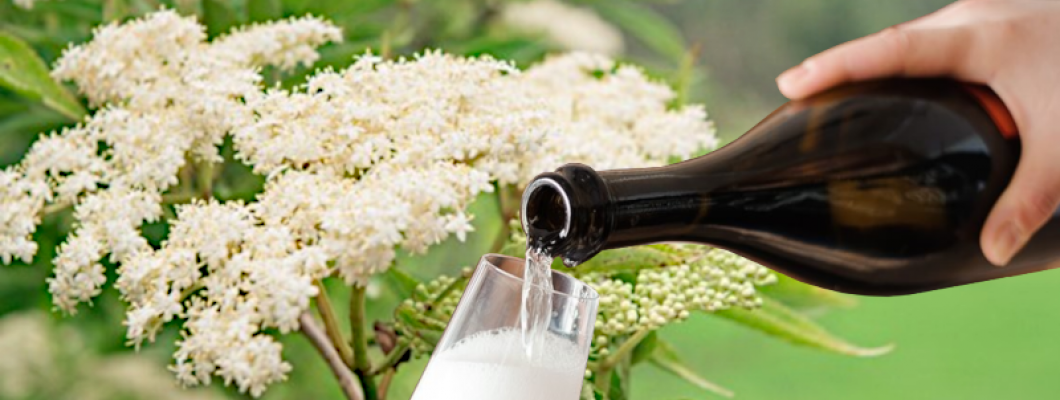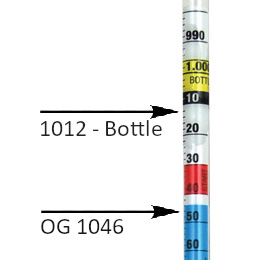Elderflower Champagne Recipe

Elderflower Champagne Recipe - Makes 8 Litres - The creamy white flower heads of the elder tree appear in late spring, early summer, right throughout the Uk - Elderflower Champagne is an easy to make favourite with many people as unlike most hedgerow wine recipes, this one is ready to drink in just a few weeks from start to finish. This recipe is for 8 litres (just a little short of 2 gallons) but can be easily halved if you wish. It will result in a fresh and fruity champagne with subtle floral notes and a low alcohol content of around 4 to 5% ABV so is an ideal thirst quencher for those hot summer days.
Ingredients
- 16 Medium Sized Elderflower Heads - (20g Of Dried Elderflower Can Be Used If Fresh Heads Are Not Available)
- 1kg Sugar
- 5g Sachet Of Champagne Yeast
- 3Lemons
Equipment
- 2 x 10/12 Litre Buckets
- Hydrometer
- Trial Jar
- Straining Bag
- Thermometer
- 8 x 1 Litre Bottles Or Equivalent
Method
Inspect the Elderflower Heads carefully and remove any insects. Trim as many stalks as possible with a pair of scissors, only the flowers are required.
Dissolve 1Kg of sugar with 1 litre of boiling water into a clean and sterilised 10/12 litre bucket, then add 7 litres of cold water along with the elderflower heads and the juice and zest of 3 lemons.
Your wine must should now be at a temperature of between 18 to 22 degrees centigrade, if it is higher than this, leave it to cool a while.
It is good practice to take a Hydrometer reading and this is more important with Elderflower Champagne as unlike most other home made wines, you will be bottling this wine whilst it is still fermenting and it is vital it is bottled at the correct time.
The hydrometer reading before your yeast is added (this is known as OG or SG) should be around 1046

Next add your 5gram sachet of Champagne yeast, fermentation should start after around 24 hours.
Take a hydrometer reading after 2 or 3 days and monitor daily until your get to a reading of 1010 - 1012, now its time to strain off the elderflowers using a straining bag or muslin and then bottle your (still fermenting) Elderflower champagne.
Transfer to 8 x 1 Litre PET Plastic bottles (or equivalent)…If using glass bottles it is important to use a suitable strong glass bottle that has a good sealing stopper (Wine bottles are not suitable) and we do not recommend the use of any glass bottle over 750ml, once bottled, store out of direct sunlight for a further 3-4 days, fermentation will continue in the sealed bottles and as the co2 produced cannot escape, the pressure will build and co2 will be imparted into your wine, turning it into highly carbonated fizzy elderflower champagne. It can now be placed in a fridge for a few hours before serving.
Tips
The use of a hydrometer is very important when making elderflower champagne, if you ever see a recipe that says "Bottle after X days" you do so at your own risk! as without a hydrometer you have no way of knowing how far along the fermentation process you are and bottling too early can have catastrophic effects, fermentation is a process that is not easy to stop and the pressures produced can be huge.....easily high enough to break glass bottles.
Elderflower Champagne is one of the very few home made wine recipes that can be served with no waiting / ageing time, once the wine is carbonated its ready to drink.
It goes well with lots of additions! Strawberries, Raspberries, in fact almost any fruit, sliced and dropped straight in the glass.....Mint is also a nice addition.
If its not Elderflower season or you have none available, the above recipe works just as well with dried elderflowers (Just the same as fresh, but with all the moisture removed) dried elderflower is incredibly potent and only a very small amount is required.
